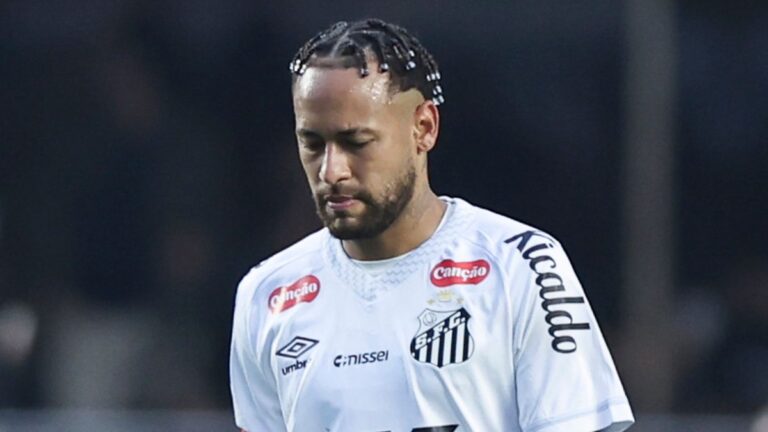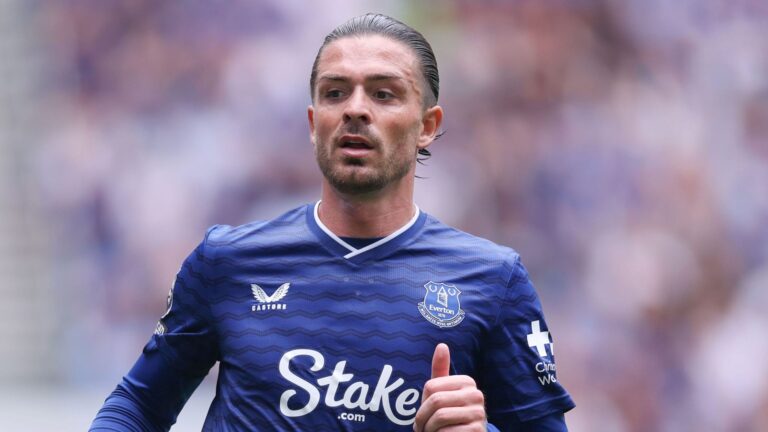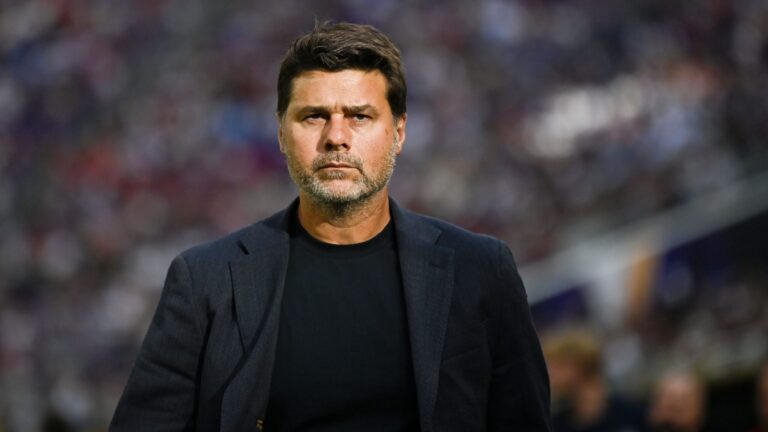The Debate Ignites: Alexi Lalas Challenges NFL Stars on Advancing U.S. Soccer
In the ever-evolving realm of sports investment, Alexi Lalas, the former U.S. national team icon, is challenging the approaches of prominent U.S. figures investing in overseas soccer. He celebrates the global reach of these ventures but calls for a more strategic focus to bolster domestic soccer growth, stressing the importance of nurturing American talent alongside international pursuits.
- Lalas expresses discontent with celebrities who overlook U.S. sports ecosystems in their international endeavors
- He argues that pursuing global soccer should complement, not undermine, ongoing developments in American leagues
- These ex-เอ็นเอฟแอล athletes have channeled their resources into partial ownership of British soccer teams



Growing American Stakes in European Soccer Leagues
Recent trends show a rising wave of U.S. athletes expanding into foreign leagues, with 2024 statistics indicating that nearly 20% of top European clubs now feature American investors. This shift has generated both excitement and contention, as seen in the cases of retired NFL players like Tom Brady and J.J. Watt, who hold minority shares in teams such as Birmingham City and เบิร์นลีย์ FC, highlighting a blend of opportunity and potential oversight of homegrown soccer.
Lalas’s Perspective on Celebrity Investments in Domestic Soccer
Though Lalas respects individual financial decisions, he strongly objects to any neglect of U.S. soccer structures. During a recent media session, he explained how such investments can expand economic avenues and tap into worldwide sports fervor, but they should enhance rather than eclipse local advancements. As an illustration, instead of emphasizing emerging talents similar to a breakout star like Jude Bellingham, some high-profile individuals inadvertently sideline the progress in American player development programs.
Balancing International Appeal with Local Support
Lalas underscores that true advocacy for soccer involves recognizing the work of those fostering the sport domestically, rather than perpetually benchmarking it against European successes. He notes that many influential Americans have bypassed chances to back ระดับชาติ competitions, which require strong champions. By 2024, reports show a 28% rise in youth soccer participation, driven by grassroots efforts, even as celebrity backing frequently shifts abroad.
Impact of Public Statements and Media Presence
When personalities like Brady discuss the resilience of American sports and the value of homegrown skills, it can inadvertently weaken local frameworks. Lalas advises that these figures leverage their prominence to promote their international ties without dampening national spirit. Alternatively, they might explore parallels between NFL strategies and soccer expansion in the U.S., promoting a unified approach that bridges the two.
Opportunities and Challenges in Global Soccer for American Development
The influx of investments across leagues like the English พรีเมียร์ลีก และ กัลโช่ เซเรีย อา offers both prospects and hurdles for U.S. soccer. It exposes American audiences to premier competitions while urging domestic leaders to innovate. In mid-2024, experts predict that increased U.S. involvement could spark partnerships, such as adopting effective European training models, to strengthen local programs and build a more robust foundation.
Unpacking the Motivations Behind Alexi Lalas’s Critiques
As a outspoken former U.S. national team player and current analyst, Alexi Lalas has consistently pushed for soccer’s expansion in America. His recent statements target retired NFL stars Tom Brady and J.J. Watt, along with European stakeholders in U.S. leagues, for what he sees as misguided views on the sport’s domestic growth. These remarks expose the ongoing tensions between traditional American sports figures and the evolving landscape of global investments and endorsements.
The Role of Alexi Lalas in Shaping U.S. Soccer Debates
With a storied background as a U.S. Men’s National Team defender in the 1990s, including key contributions to the 1994 FIFA World Cup that fueled national interest, Alexi Lalas provides critical perspectives. Now, as a commentator for networks like Fox Sports, he often tackles topics such as MLS expansion and the effects of foreign funding, drawing from his deep commitment to genuine American soccer progress. Terms like “Alexi Lalas on soccer development” and “advances in U.S. soccer” frequently emerge in conversations, reflecting his influence on public discourse and the need for outsiders, including athletes like Brady and Watt, to grasp the sport’s unique challenges in a football-centric nation.
Assessing the Soccer Views of Tom Brady and J.J. Watt
Renowned NFL quarterback Tom Brady and defensive star J.J. Watt have stepped into soccer, attracting Lalas’s attention. Brady’s investment in Birmingham City and his comments on soccer’s rising popularity in the U.S., alongside Watt’s social media advocacy and event participation praising the sport’s global allure, have stirred debate. Lalas views these moves as somewhat shallow, suggesting that Brady and Watt are applying NFL mindsets to soccer without acknowledging its specific barriers in the American context. For example, Brady’s analogies between soccer matches and football games are critiqued by Lalas as oversimplifying the cultural and structural divides, while Watt’s promotions of MLS teams are seen as prioritizing fame over meaningful local engagement, fueling discussions on “Tom Brady’s impact on soccer” and “J.J. Watt’s views on U.S. soccer dynamics.”
The Effects of European Investors on American Soccer Environments
European investors are making significant inroads in U.S. soccer, with groups linked to clubs like แมนเชสเตอร์ยูไนเต็ด supporting MLS teams. Lalas describes this as a double-edged sword, providing funds and knowledge while potentially overshadowing native initiatives. The Glazer family’s control of both Manchester ยูไนเต็ด and the Tampa Bay Buccaneers serves as a prime example, facing backlash for emphasizing profits over community connections. In Lalas’s assessment, these investors often treat U.S. soccer as an extension of their European operations, which could dilute the sport’s distinct American identity, tying into broader themes of “European impact on U.S. soccer” and the importance of prioritizing domestic players and infrastructure to keep soccer from feeling like an imported spectacle.
Key Points of Lalas’s Arguments and Counterpoints
Central to Lalas’s concerns are authenticity and a thoughtful approach to U.S. soccer’s future. He claims that remarks from Brady and Watt can come across as patronizing, implying that soccer needs NFL-style hype to succeed, and accuses European investors of chasing quick gains at the expense of long-term efforts, such as youth training and inclusive access. To expand on this, consider the following core elements:
- Overemphasis on celebrity influence: Figures like Brady and Watt may create hype, but they could distract from foundational work aimed at cultivating dedicated fans
- Differences in cultural strategies: American soccer requires approaches focused on local tournaments and educational outreach, rather than depending on star-driven promotion
- Investment priorities: European supporters often pursue fast returns, which Lalas argues should be balanced with initiatives that promote inclusivity and diversity in U.S. soccer
Value of Diverse Contributions to American Soccer
While Lalas’s points are compelling, the input from NFL personalities and European investors offers notable advantages, including greater exposure and resources for the sport. This can result in broader media attention, drawing in new followers, and fresh management ideas that enhance MLS’s appeal and competitiveness, potentially leading to innovations like joint training programs that merge NFL tactics with soccer techniques.
Engaging with Soccer Dialogues in America
For those passionate about soccer’s growth in the U.S., here’s how to join the conversation:
- Follow key commentators: Tune into Fox Sports or ESPN segments with Lalas and others to form your stance on “U.S. soccer controversies”
- Connect with community networks: Participate in amateur leagues or online forums to see how European investments and American celebrities affect the game at the grassroots level
- Stay updated on news: Monitor MLS developments and statements from figures like Brady and Watt to explore various perspectives
Current Case Studies in U.S. Soccer Evolution
Looking at real scenarios, Inter Miami’s high-profile deals, including stars like Lionel Messi since 2023, echo Lalas’s apprehensions about celebrity focus versus local nurturing. Similarly, J.J. Watt’s support for Burnley FC shows how NFL players can boost fan engagement, though Lalas might argue it doesn’t address core issues like increasing participation among young athletes. These examples illustrate the dynamic changes in U.S. soccer, where blending external influences with internal priorities is crucial for enduring progress, as ongoing debates continue to highlight the balance between tradition and innovation informed by figures like Lalas.
Alexi Lalas’s Legacy and Impact on U.S. Soccer
Known for his direct and insightful commentary, Alexi Lalas has been a pivotal figure in American soccer, drawing from his days as a U.S. Men’s National Team standout during the 199
Alexi Lalas’s Insights into Tom Brady’s Soccer Investments
Alexi Lalas, the former U.S. national team star and current soccer analyst, has been vocal about how celebrities like Tom Brady are reshaping soccer in the United States. Brady, known for his legendary NFL career, made headlines with his minority ownership stake in Birmingham City, a club in England’s แชมเปี้ยนชิพ league. Lalas views this as a pivotal moment for American sports figures crossing over into soccer, highlighting how Brady’s business acumen could elevate the sport’s profile stateside. In discussions on various platforms, Lalas points out that Brady’s involvement isn’t just about passion; it’s a strategic move that could attract more U.S. fans to soccer leagues like the MLS and beyond.
Lalas often emphasizes that Brady’s perspective brings a fresh, winning mentality to soccer ownership. For instance, Brady’s emphasis on team วัฒนธรรม and performance metrics mirrors his approach in football, potentially inspiring other athletes to invest in soccer clubs. This crossover is key to growing soccer in the United States, as it bridges the gap between American sports fans and the global game.
The Impact of J.J. Watt’s Entry into Soccer Ownership
Shifting focus to J.J. Watt, another NFL standout, Alexi Lalas has analyzed how Watt’s investment in Burnley FC reflects a broader trend of American athletes embracing European soccer. Watt, a defensive end turned investor, acquired a stake in the English Premier League club in 2023, citing his love for the sport and its competitive nature. Lalas appreciates Watt’s perspective, noting that it underscores the rising appeal of soccer investment for U.S. sports personalities looking to diversify their portfolios.
In Lalas’s view, Watt’s involvement demonstrates the potential for cross-sport synergy, where NFL stars bring their disciplined work ethic to soccer. For example, Watt has spoken about the tactical depth of soccer, drawing parallels to football strategies, which Lalas echoes in his analyses. This could lead to increased media coverage and fan engagement in the U.S., making soccer more accessible and exciting for audiences accustomed to high-stakes American sports.
Lalas also touches on the challenges, such as navigating international regulations and fan expectations, but he remains optimistic. He believes Watt’s stake in Burnley could serve as a model for other athletes, fostering a more vibrant soccer ecosystem in the United States.
European Owners and Their Influence on U.S. Soccer Growth
European owners have been pouring resources into soccer in the United States, and Alexi Lalas provides sharp insights into their motivations and effects. Figures like those from Manchester United’s Glazer family, who own the Tampa Bay Buccaneers, exemplify how European ownership groups are blending their soccer expertise with American markets. Lalas argues that this influx is accelerating the professionalization of the MLS, with teams like those owned by European entities benefiting from advanced scouting and youth development programs.
Lalas highlights specific examples, such as the ownership ties between European clubs and MLS franchises, which facilitate player loans and knowledge sharing. This not only boosts on-field performance but also enhances fan experiences through better stadiums and marketing strategies. From Lalas’s perspective, European owners see the U.S. as a lucrative expansion opportunity, driven by the country’s growing youth participation in soccer and its potential for broadcasting deals.
One key point Lalas raises is how these owners are adapting to the unique cultural aspects of American sports, like integrating tailgating traditions or community events, to make soccer more relatable.
Benefits of Athlete and European Investments in U.S. Soccer
The involvement of figures like Tom Brady, J.J. Watt, and European owners brings several benefits to soccer in the United States. First, it injects much-needed capital into clubs, allowing for infrastructure improvements and talent acquisition that can compete on a global stage. Lalas often notes that this financial boost helps MLS teams attract top players, elevating the league’s competitiveness and drawing more viewers to soccer matches nationwide.
Bullet-pointing some key benefits based on Lalas’s analyses:
- เพิ่มการมองเห็น: High-profile investments generate media buzz, exposing soccer to new audiences and potentially increasing TV ratings and attendance at games.
- Talent Development: European owners bring expertise in youth academies, helping nurture homegrown talent and reducing reliance on imports.
- การมีส่วนร่วมของแฟนๆ: Athletes like Brady and Watt create excitement, with their personal brands encouraging younger fans to follow soccer more closely.
- Economic Growth: Investments stimulate local economies through job creation in sports management and merchandising.
These benefits align with Lalas’s broader vision of soccer becoming a mainstream sport in the U.S., rivaling the NFL and NBA.
Practical Tips for Fans Following Soccer Investments
If you’re a fan interested in how these perspectives are shaping soccer in the United States, Alexi Lalas offers practical advice. Start by following analysts like Lalas on social media or tuning into his ESPN appearances for real-time insights into ownership changes. For instance, track Tom Brady’s influence on Birmingham City’s strategies or J.J. Watt’s role in Burnley’s decisions through club updates and interviews.
Here are some actionable tips:
- Stay Informed: Subscribe to newsletters from MLS and European leagues to get updates on investments and player movements.
- Engage Online: Join fan forums or Reddit communities focused on soccer in the U.S. to discuss Lalas’s analyses and share thoughts on Brady and Watt’s impacts.
- Attend Events: Visit MLS games or watch Premier League matches to see firsthand how European ownership is transforming the sport.
- Diversify Your Viewing: Explore documentaries on athletes transitioning to soccer ownership for a deeper understanding of their perspectives.
Lalas suggests that fans can even participate in fantasy soccer leagues tied to invested clubs to make the experience more interactive.
Case Studies of First-Hand Experiences in Soccer Investments
Drawing from case studies, Alexi Lalas shares first-hand experiences from his own career and observations. For example, Lalas recounts his time as a player and executive in the MLS, where he witnessed early European investments, like those from the Anschutz Entertainment Group, which helped stabilize the league. Comparing this to modern cases, Lalas analyzes how Tom Brady’s hands-on approach at Birmingham mirrors successful models in the U.S., such as David Beckham’s involvement with Inter Miami.
Another case study involves J.J. Watt’s experience with Burnley, where he actively engages with fans and staff, much like European owners who have revitalized MLS teams. Lalas uses these examples to illustrate how personal investment leads to tangible outcomes, such as improved team performance and fan loyalty, ultimately advancing soccer’s footprint in the United States.
Through these real-world applications, Lalas’s การวิเคราะห์ provides a roadmap for future investments, emphasizing the importance of cultural integration and strategic planning.










